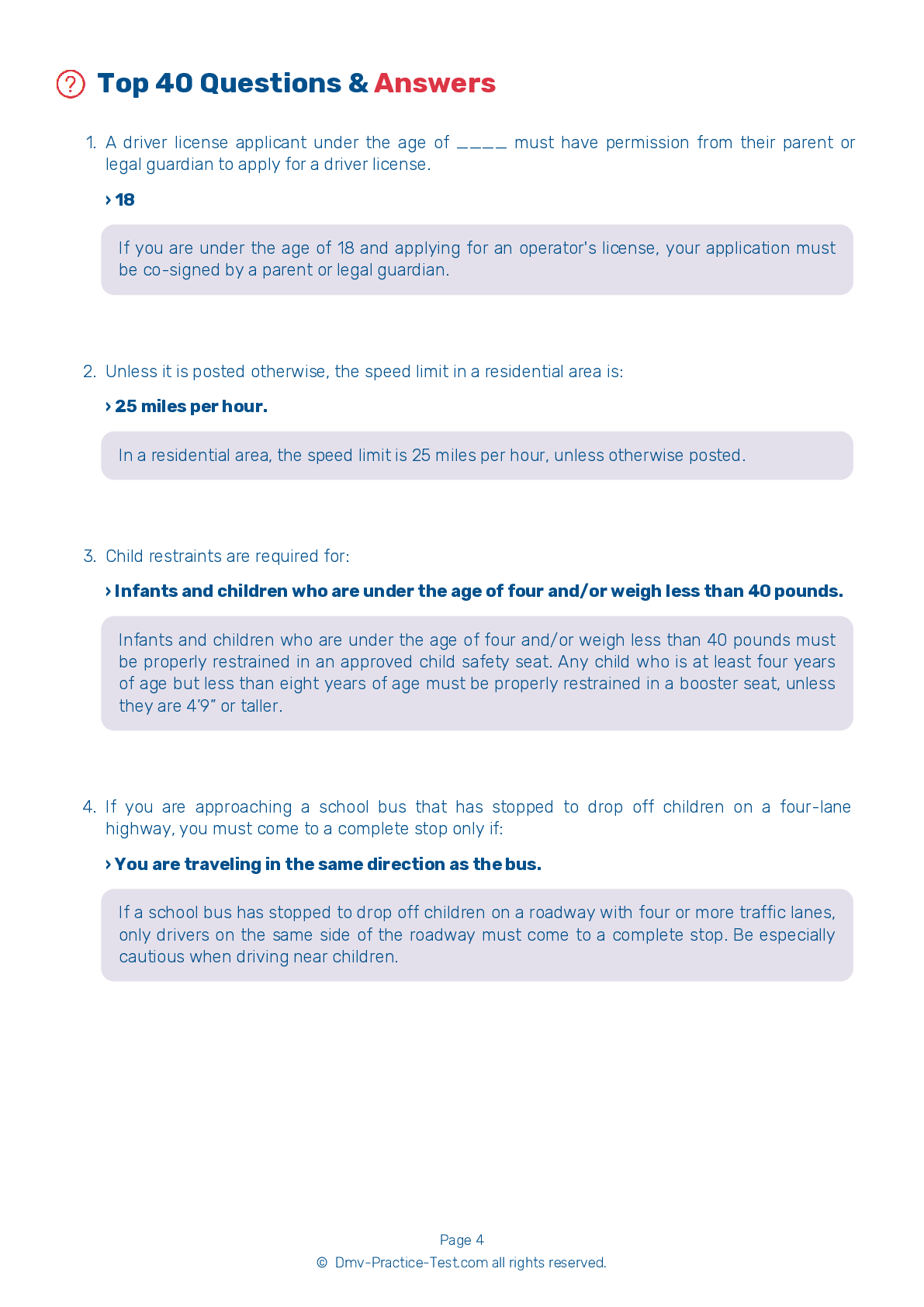FREE Ohio DMV Practice Test #11 Page 5 of 5
The practise exams for Ohio's DMV have been revised for January 2025. It comprises questions based on the most important traffic signals and laws for 2025 from the Ohio Driver Handbook. To study for the DMV driving permit test and driver's licence exam, use actual questions that are very similar (often identical!) to the DMV driving permit test and driver's licence exam.
Each question on the practise exam has a tip and explanation to help you recall the ideas. Questions about traffic rules, traffic signs, and driving statutes, as well as knowledge from the Driver Handbook, will be included in the written portion of the official Ohio DMV test.
You must properly answer 35 of the 40 questions to receive a passing mark. To help you prepare for your instruction permit or driver's licence, take this practise test from the Ohio Department of Motor Vehicles.
The DMV exam is offered in a variety of languages.
Using any form of testing help will result in an automatic fail, and the DMV may take further action against your driver's licence, so avoid it.
33 . This sign means:

Regulation signs regulate traffic speed and movement, displaying rules which drivers must obey. Wherever this regulation sign is posted, U-turns are not permitted.
34 . If a transit vehicle is signaling to re-enter the main roadway following a stop, you must:
You must yield to any transit vehicle that is signaling to pull back onto the main roadway after it has stopped to load or unload passengers. Change lanes, slow down, or stop to allow the bus safe re-entry into traffic.
35 . When approaching a flashing red traffic light, drivers should:
Flashing red lights are used at dangerous intersections. Treat them like stop signs.
36 . What does a flashing yellow traffic light mean?
A flashing yellow traffic light indicates that you should drive with caution.
37 . A red and white triangular sign at an intersection means:
A triangular red and white yield sign means that you must decrease speed as you approach an intersection and yield the right-of-way to any vehicles or pedestrians in the intersection. You must be prepared to stop if conditions require it.
38 . This sign means:

Decrease your speed as you approach an intersection with a yield sign. Prepare to stop and yield the right-of-way to vehicles and pedestrians in the intersection or crossroad. You must come to a full stop at a yield sign if traffic conditions require it.
39 . This sign means:

Warning signs prepare drivers for upcoming road conditions and hazards and are usually yellow with black markings. This sign alerts drivers to potential traffic merging from the right. Drivers should prepare to allow the traffic to merge safely.
40 . While driving, you come upon a sign displaying the words “Reduced speed, 35 mph." This means:
"Reduced speed" signs inform drivers that they must reduce their speeds. If a new speed limit is posted on one of these signs, the new speed limit begins at the sign.
See the exact questions that will be on the 2025 Ohio DMV exam.
99.2% of people who use the cheat sheet pass the FIRST TIME
LT gives us an insight on how the cheat sheet provided her with all the study questions she needed before taking her test.
Joe initially studied with the handbook and failed his test, he eventually found us online, studied and pass his test the first time around.



